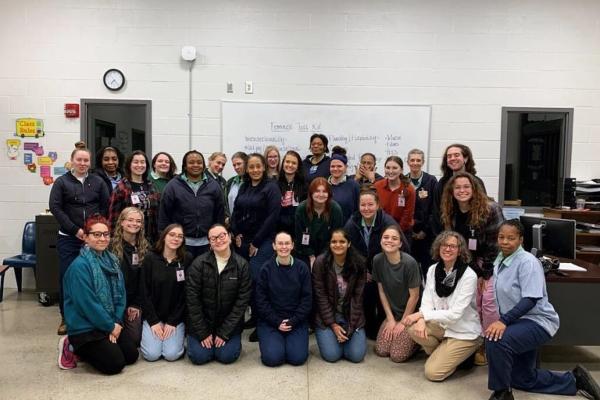People in Ohio’s prisons can take liberal arts classes, thanks to an OSU program

WOSU recently published an article focused on OPEEP's work within the Ohio Reformatory for Women (ORW)!
Read the full story below:
When Leslie Rombkowksi was imprisoned at Ohio Reformatory for Women in Marysville, she wanted to continue her education. But there was a waitlist for Sinclair Community College courses.
“They told me I wasn't even eligible for college classes until the last two and a half years [of my sentence],” Rombkowski said. “I was eligible for release earlier than that. So it was never going to happen for me.”
GED programs and vocational and technical training have been offered in Ohio prisons for years. For the last three years, Ohio State University has offered people who are incarcerated a variety of other classes — including women’s studies, African American studies and psychology.
The Ohio Prison Education Exchange Project allows Ohio college students and people in prison to learn alongside one another.
"It was never going to happen for me.”Leslie Rombkowski, formerly incarcerated student of OPEEP
When Rombkowski heard about the program, she decided to take advantage of it. She signed up for a class on mass incarceration that changed the way she viewed the carceral system around her.
Before being incarcerated, she worked as a paralegal.
“I spent most of my life on that side, and had a viewpoint of ‘criminals’ and what they did and how they should be sentenced … to being one of those people. It gave me a better view of how to look at it from the inside,” Rombkowski said.
A new perspective
Rombkowski said the class taught her about the social structures that lead to imprisonment and helped her understand the women beside her better.
That’s intentional, according to Mary Thomas, an OSU professor and one of the founders of the education program.
“So often, the only way they've understood their incarceration is through this narrative of personal failure,” Thomas said.

Ohio Prison Education Exchange Project
Some of the OPEEP courses tackle the carceral system from a sociological or philosophical perspective.
Thomas’ classes inside prisons look beyond that. Students discuss the link between addiction and incarceration, and talk about why health care is often hard to access in prison. Not all courses are directly about incarceration, but Thomas said they all aim to give students a way to contextualize their personal experiences.
“And isn't that what higher ed is all about: giving us a perspective on the world that we didn’t have before?” she said.
Breaking down stereotypes
Each student leaves with college credits they can use toward a degree, and for those inside the prisons, those college credits are free.
Classes are taught the same as any campus course, with group projects, essays and assigned readings. The major difference is they have to work around not having internet or access to technology, said Thomas.
“Sometimes it can be a heavier lift, but we really make sure that the workload is absolutely even and everyone's graded on the same scale,” she said.
It’s just as much a learning experience for students coming from OSU’s campus, like Muheeb Hijazeen, a junior studying industrial systems engineering.
“One thing I was really motivated to do was break down the stereotypes of what we understand and think about those who are incarcerated,” he said.

Ohio Prison Education Exchange Project
The program relies on buy-in from on-campus students to continue. OPEEP leaders advertised the program at the Student Involvement Fair this year.
Hijazeen said he found a connection with his incarcerated classmates, and his experience at the Ohio Reformatory of Women shaped his perspective on the criminal justice system.
“We don't really understand the scope of things until we meet someone who's gone through it, and who's lived experiences that we've always just thought about or kind of studied,” Hijazeen said.
Now, he’s joined the program’s advisory council to help expand its success with OSU students inside prison and out.
Earning degrees
The program’s presence is already growing. They’re bringing a degree program into The Ohio Reformatory for Women, Thomas said. She hopes it will become the first Women and Gender Studies bachelor's degree offered in a U.S prison.
It’s different from the education typically offered to those in prison, like trade schools. But Thomas said she believes it holds just as much value.
“They’ll be leaders and they'll understand what that can provide them, that women's empowerment can actually be a real force for change in the facility,” Thomas said.
Rombkowski agreed. She said she thinks an educational opportunity like that could be transformational for incarcerated women.
“I would bet my life that if you gave a girl a bachelor's degree from OSU, that she's not coming back,” Rombkowski said.
She was released from prison in July. Already, she said, she’s using the lessons she learned in the program as she starts anew.
